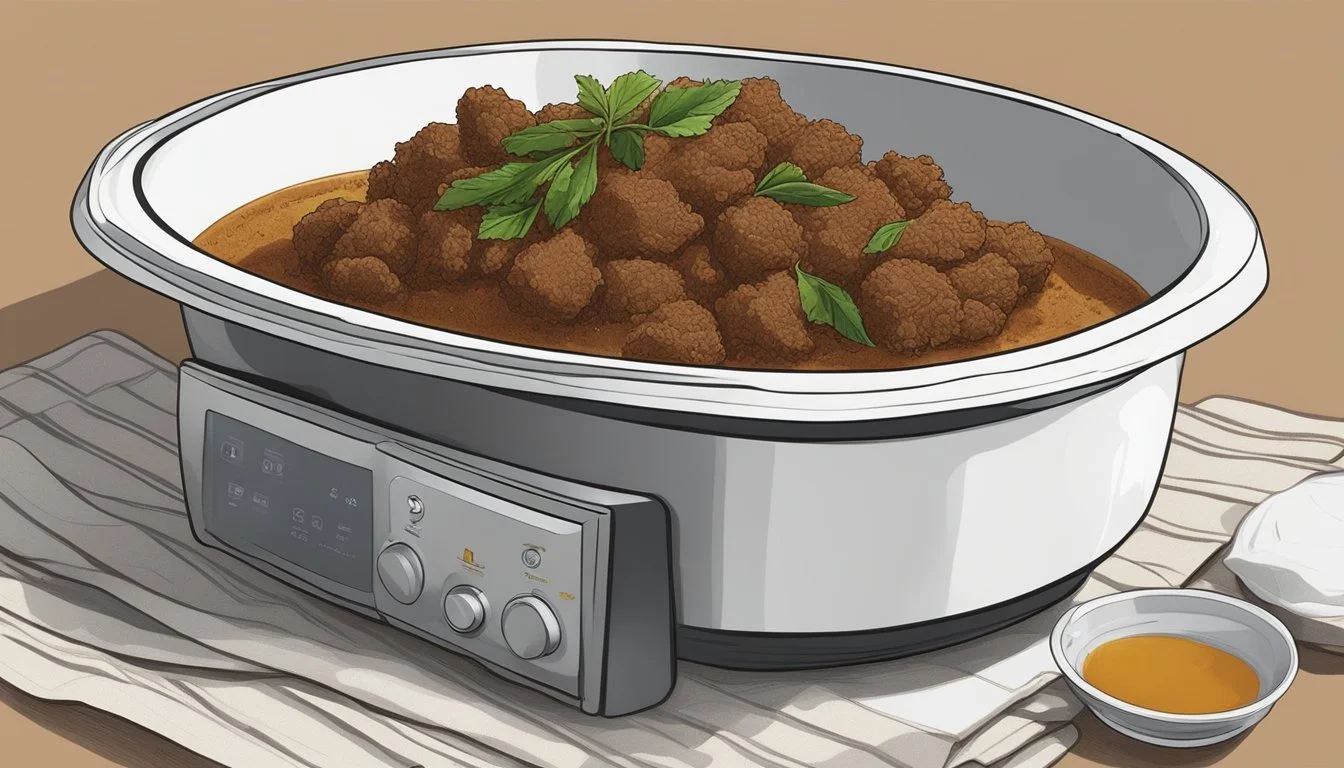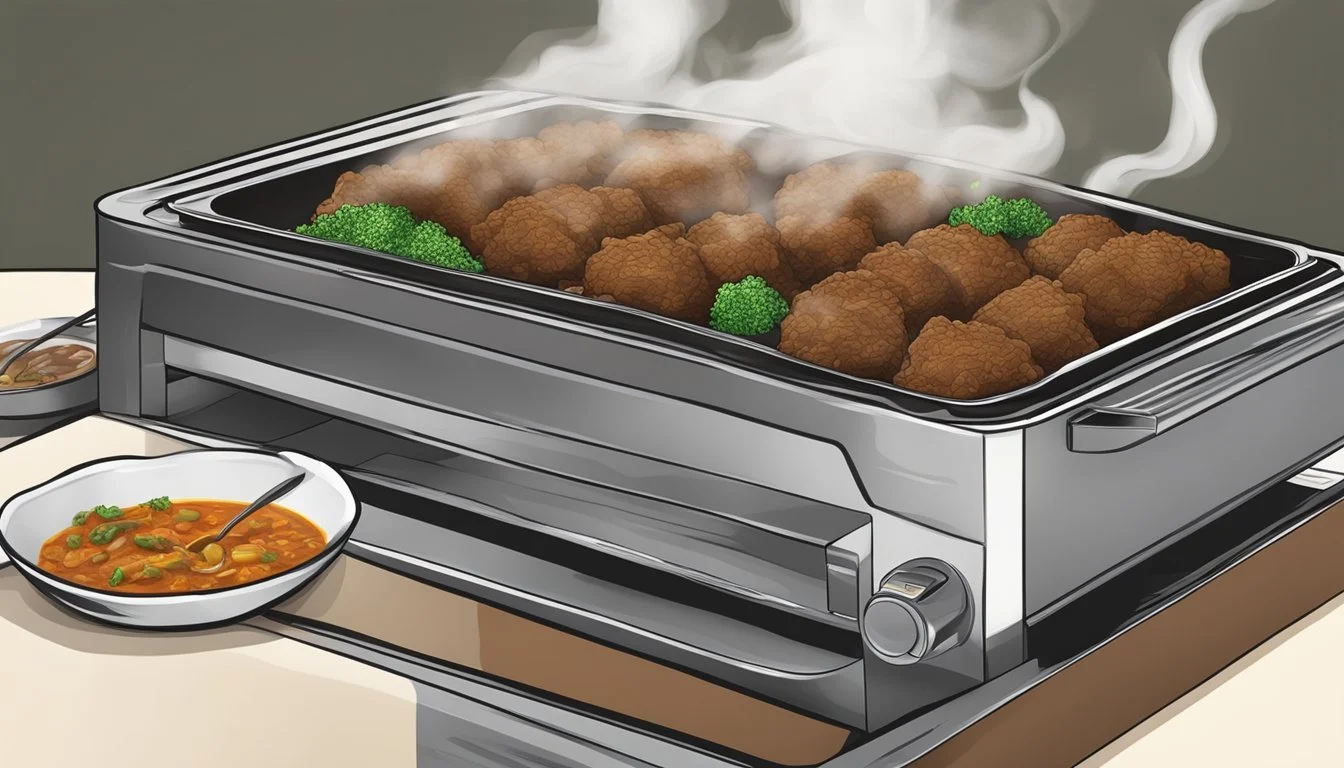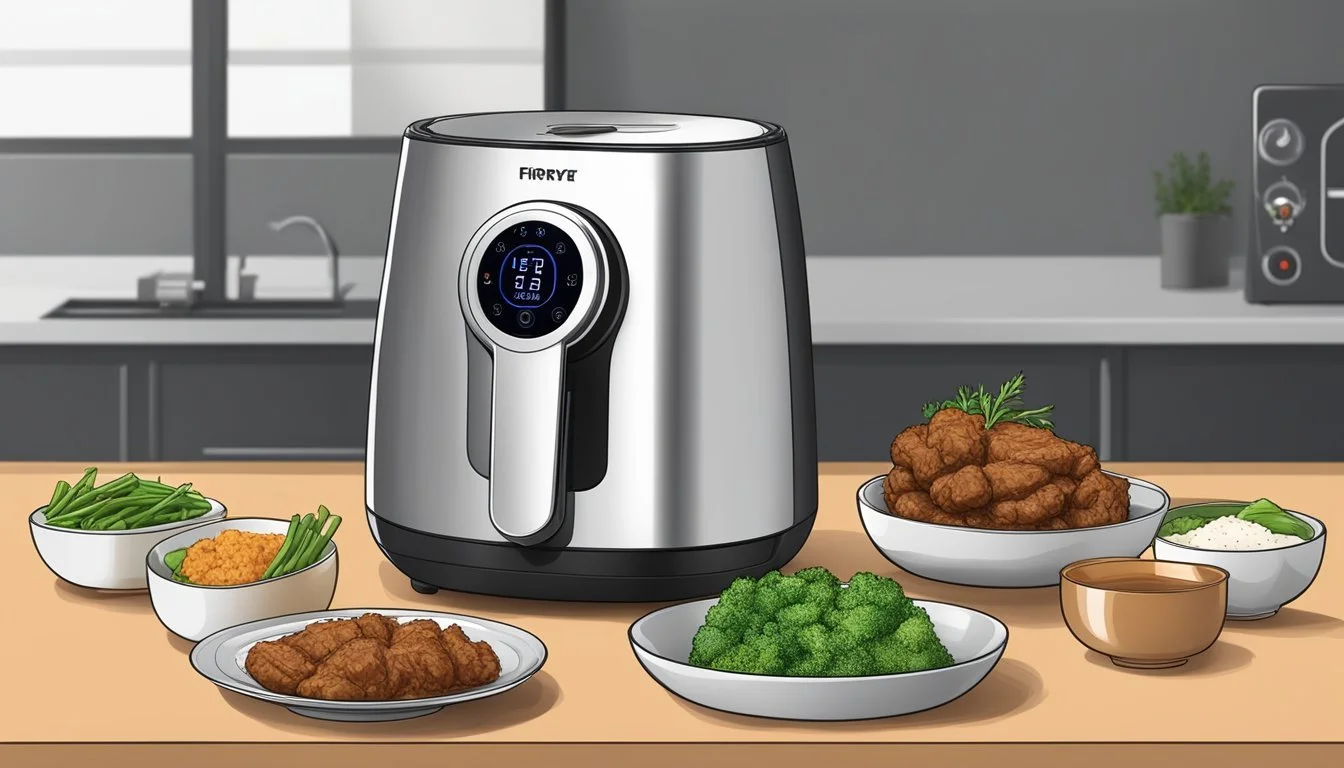Best Way to Reheat Beef Rendang
Ensuring Tender Texture Preservation
Reheating beef (What wine goes well with beef?) rendang (What wine goes well with beef rendang?) is a matter of preserving its renowned tender texture and rich flavor. Originating from Indonesian cuisine, this dish is known for its aromatic spices and succulent meat, which often becomes even more flavorful over time. However, reheating it without drying out the meat or losing the depth of flavor requires a careful approach. The key lies in gentle heating methods that respect the integrity of the dish’s complex flavor profile.
Several reheating methods stand out for their ability to maintain the dish's quality. Using an oven to gently warm the rendang allows for an even distribution of heat, which is crucial to avoid overcooking. Covering the beef rendang with aluminum foil while it bakes prevents moisture loss, ensuring that the meat remains juicy. The slow cooker method is also effective, as it provides a consistent low temperature that reheats the dish gradually, allowing the beef to reabsorb its own juices and the flavors from the spices.
Whether it's prepared in a home kitchen or served in a restaurant, beef rendang's ideal reheating strategy focuses on low-and-slow methods. This approach takes time but is necessary to deliver a dish that is as close as possible to its initial, freshly-cooked state. Careful reheating ensures that the distinct flavors of beef rendang are not only retained but also enhanced, confirming the dish's reputation for improving with time.
Understanding Beef Rendang
Beef Rendang is a traditional dish originating from Indonesia, also popular in Malaysia, known for its complexity of flavors and rich history. It is a slow-cooked dry curry deeply infused with a blend of aromatic herbs and spices.
Key Ingredients:
Beef: Typically a tougher cut, slow-cooked to become tender.
Coconut Milk: Adds richness and forms the base of the sauce.
Spices: A variety of spices including lemongrass, galangal, garlic, ginger, turmeric leaves, and chillies.
This dish is celebrated for its tender texture and the harmony of spices that permeate the meat. Renowned for its slow-cooking process, the beef is gently simmered in coconut milk and a mixture of ground spices until it becomes succulent and flavorful, with the liquids reducing to a thick, caramelized coating.
Culinary Context:
Origin: Indonesian archipelago, with versions found in Malaysia.
Serving: Often served during festive occasions and gatherings.
Unlike other curries, Rendang is characterized by a lack of broth, setting it apart as a dryer yet incredibly moist dish. The balance of spice and the reduction of coconut milk are essential in achieving the correct consistency and taste that Rendang is famous for. It is a dish of patience and care, ensuring that the meat is well absorbed in the aromatic spices and coconut milk while keeping its fibrous structure intact.
Storing Leftover Beef Rendang
Proper storage of leftover Beef Rendang is crucial to maintain its quality and ensure food safety. Utilizing the correct materials and temperature settings can prolong the dish's shelf life while keeping its tender texture.
Refrigeration Tips
When refrigerating Beef Rendang, one should place the leftovers in an airtight container to prevent the spread of odors and contamination. Wrapping the dish in plastic wrap or aluminum foil before placing it into the container can provide an additional barrier against other flavors. Refrigerated Beef Rendang is best consumed within:
3-4 days for optimal taste and safety
To maintain quality during refrigeration, the temperature should be set below 40°F (4°C) to inhibit bacterial growth.
Freezing and Thawing
For longer storage, freezing Beef Rendang is a suitable option. Here's how to properly freeze and thaw the dish:
Cool it first before freezing to minimize the risk of bacterial growth.
Wrap it tightly with plastic wrap or aluminum foil, or use an airtight container or vacuum-sealed bag to prevent freezer burn.
Label it with the freezing date for convenience and to avoid prolonged storage beyond:
3 months, which is the maximum suggested time for retaining quality
To thaw frozen Beef Rendang, one should transfer it to the refrigerator and let it slowly defrost overnight. Avoid reheating directly from frozen to prevent uneven heating and potential loss of texture.
Preparation for Reheating Beef Rendang
Proper preparation is key to maintaining the tender texture of leftover Beef Rendang when reheating. Whether dealing with slices or whole roasts such as tenderloin or pot roasts, the method begins well before heat is applied.
Bringing to Room Temperature
It is essential to start by bringing the Beef Rendang to room temperature before reheating. This step ensures even heating throughout the meat, preventing a tough texture. They should remove the Beef Rendang from the refrigerator and let it sit for about 30 minutes. This timeframe is sufficient for standard portion sizes, but larger cuts may require more time to temper.
Reheating Methods Overview
Whether one is aiming to preserve the rich flavors or retain the tenderness of Beef Rendang, choosing the right reheating method is crucial. Each technique has its own advantages, and understanding these can help ensure the dish remains as enjoyable as when it was first prepared.
Stovetop Method
On the stovetop, heat a pan over medium heat and add the Beef Rendang. Stir occasionally for even heating, which should take approximately 2-3 minutes.
Oven Method
The oven approach involves setting the temperature to 350°F (175°C). Spread the rendang out on a baking sheet and cover with foil to lock in moisture. Heat for 20-25 minutes until thoroughly warmed.
Sous Vide Method
For sous vide, place slices of roast beef in a pre-sealed bag and submerge in a water bath. Heat the water to a temperature just below boiling and allow the meat to warm evenly, preserving its tenderness.
Microwave Method
Using a microwave, place the Beef Rendang in a microwave-safe dish, cover with a damp paper towel to prevent drying out, and heat on medium power for 2-3 minutes.
Air Fryer Method
When using an air fryer, set the temperature to 350°F (175°C). Place the Beef Rendang in the fryer basket and heat for around 4 minutes, checking periodically to prevent drying out.
Stovetop Reheating
Reheating beef rendang on a stovetop allows for greater control to prevent overheating, which is crucial in maintaining its tender texture. The two main methods include using a skillet for direct heating and simmering with liquids to infuse moisture.
Using a Skillet
For those who prefer a quick method, reheating beef rendang in a hot skillet is effective. The cook should:
Heat the skillet on medium heat, making sure it's hot enough to warm the beef rendang evenly.
Place beef rendang in the skillet, allowing it to reheat for a few minutes. They should stir the meat occasionally to ensure even heating and to prevent scorching.
Simmering with Liquids
To retain the juicy tenderness of beef rendang, simmering it with a liquid is recommended. Here's how:
Select a suitable liquid, such as water or coconut milk, to complement the flavors of the rendang.
In a pot, bring the liquid to a gentle simmer over low heat, then add the beef rendang.
Simmer gently for a few minutes, constantly checking to ensure that it doesn't overcook and that the meat's tender texture is preserved.
Oven Reheating
Reheating beef rendang in the oven can produce evenly warmed, tender meat if done correctly. The process involves a gentle warming period that prevents the meat from drying out, retaining its succulent texture.
Preheating the Oven
The oven should be preheated to the correct temperature to ensure the beef rendang reaches a safe and enjoyable eating temperature without overcooking. For beef rendang, which is already cooked and needs only to be warmed, preheating the oven to 350°F (175°C) is ideal. Preheating is an essential step, as placing the dish into a cold oven can result in uneven reheating and affect the tenderness of the meat.
Foil-Wrapping Technique
Using aluminum foil to wrap the beef rendang serves two purposes: it contains the meat’s juices, preventing them from evaporating, and it protects the beef from direct heat, reducing the risk of it drying out. Before placing the dish in the oven, one should:
Layout a piece of aluminum foil large enough to encase the rendang.
Place the beef rendang in the center of the foil and fold the edges to create a seal.
After wrapping, the beef rendang should be placed in the preheated oven. By capturing the residual heat within the foil, the beef is gently reheated through. The duration depends on the portion size, but typically 15-20 minutes is sufficient for the interior to warm through without compromising its moisture or flavor.
Sous Vide Reheating
Using a sous vide machine for reheating ensures that beef rendang retains its tender texture by gently bringing it to the desired internal temperature without overcooking.
Setting Up the Sous Vide Machine
He or she must first fill the sous vide machine with water and set it to the desired temperature. For beef rendang, one aims to achieve an internal temperature akin to medium-rare, which is typically around 135°F (57°C). They must ensure the machine is correctly set up to maintain a stable water temperature throughout the reheating process.
Fill the reservoir with water.
Set the temperature to 135°F (57°C) for medium-rare tenderness.
Allow the machine to preheat until it reaches the target temperature.
Using the Water Bath
When the water bath has reached the correct temperature, the individual carefully places the vacuum-sealed bag containing the beef rendang into the sous vide water bath. It is critical that the bag is fully submerged and not in contact with the sides of the container to prevent cold spots.
Submerge the vacuum-sealed bag into the preheated water bath.
Ensure it's fully submerged and not touching the container's sides.
The meat’s internal temperature will gently rise without surpassing the set degree of doneness.
Typical reheating time ranges from 45 minutes to an hour, depending on portion size.
If the beef rendang was frozen, one can reheat it directly by adjusting the time accordingly, usually adding an extra hour or two. Using a sous vide machine, they can confidently reheat beef rendang to achieve a tender texture, ensuring it is heated evenly and thoroughly.
Microwave Reheating
When reheating beef rendang in the microwave, one must pay careful attention to container selection and moisture retention to prevent the meat from drying out and becoming tough.
Using Microwave-safe Containers
It is crucial to utilize a microwave-safe container when reheating beef rendang to ensure safety and preserve the quality of the meat. Containers should not contain any metal and should be able to withstand the high heat without warping or melting.
Steps to Prepare:
Transfer the leftover roast beef into the microwave-safe container.
Cover the container with a microwave-safe lid or plastic wrap to trap steam, ensuring the beef rendang remains moist.
Adding Moisture
To keep the beef rendang tender and prevent overcooking, introducing additional moisture is key. The steam generated helps in reheating the beef evenly without it becoming dry.
Tips for Moisture:
Add a small amount of water or broth to the container before covering it. This will generate adequate steam during the reheating process.
Halfway through the reheating time, pause to stir the beef rendang, which evenly distributes the heat and moisture.
Microwave Method:
Heat the beef rendang on high power for 2-3 minutes per serving, ensuring to stir at the halfway mark to allow even reheating. Adjust the time based on the quantity of beef.
Using the Air Fryer
Reheating beef rendang in an air fryer can preserve its texture and moisture when done correctly. The key is to adjust the temperature carefully and monitor the cooking time to prevent overcooking.
Adjusting the Temperature
To begin reheating beef rendang, the air fryer should be set to a moderate temperature to ensure even warming without drying out the meat. 350°F (175°C) is typically recommended for reheating most types of meat in an air fryer. It's important to allow the air fryer to preheat for a few minutes before adding the beef rendang.
Monitoring the Cooking Time
Beef rendang should be checked frequently during the reheating process to ensure it's warmed through but not overcooked, which can affect its tender texture. Reheating times can vary based on the quantity and thickness of the beef rendang, but starting with a three-minute interval and then checking the progress is a prudent approach. The beef rendang may be foil-wrapped to promote more uniform heating and to retain its moisture. If additional time is needed, continue to heat in short bursts, checking the texture after each interval.
Additional Tips for Maintaining Texture
Ensuring beef rendang retains its tender texture during reheating is crucial. Two key approaches involve controlling heat and using a meat thermometer to gauge temperature for safety and preserving tenderness.
Controlling Heat
Gradual and even heating is essential to prevent the beef from becoming tough. For the microwave method, one should heat the beef rendang at a medium power level for short intervals, stirring occasionally to distribute heat. In an oven, wrapping the beef in aluminum foil and setting the temperature to 350°F helps maintain moisture.
Using Meat Thermometer
A meat thermometer ensures the beef rendang reaches the ideal internal temperature without overcooking. The safe temperature for reheated cooked beef is 165°F. By carefully monitoring during reheating, one can achieve optimal tenderness and ensure the meat is heated thoroughly for safe consumption.
Serving Suggestions
When presenting beef rendang, the key points to focus on are the choice of accompaniments that complement the flavors and the method of presentation that enhances the appeal of the dish.
Accompaniments
Rice: Steamed jasmine or basmati rice pairs excellently with beef rendang, as the grains soak up the rich gravy without overpowering the dish's spiciness.
Beef Broth: A bowl of warm beef broth can be served alongside to add an additional layer of flavor and to help balance the richness.
Condiments: Consider offering a range of condiments such as diced fresh chillies for added heat or a small portion of dried chillies for those who prefer a smoky flavor profile.
Presentation
Plating: Serve the beef rendang on a flat dish with the gravy poured generously over the meat to maintain its tenderness.
Garnish: Sprinkle with fresh herbs or fried shallots for a contrasting texture and an eye-catching look.
Color: Accent the plate with greenery, such as cilantro or scallions, to add a vibrant pop of color against the deep hues of the rendang.
Safety Considerations
When reheating beef rendang, prioritizing food safety is essential to prevent foodborne illnesses, especially as leftovers pose a higher risk. Two critical aspects are avoiding contamination and ensuring the beef reaches a safe internal temperature.
Avoiding Contamination
One must handle beef rendang with clean utensils and store it in airtight containers to minimize exposure to bacteria. Even when reheating, it should not come into contact with any raw meat or unclean surfaces that could introduce contaminants.
Reheating to Safe Temperatures
Reheating beef rendang to a safe internal temperature is crucial. The goal is to reach an internal temperature of 165°F (74°C) to ensure all harmful bacteria are killed. It's advisable to use a food thermometer to check the temperature at the thickest part of the beef to guarantee safety.






